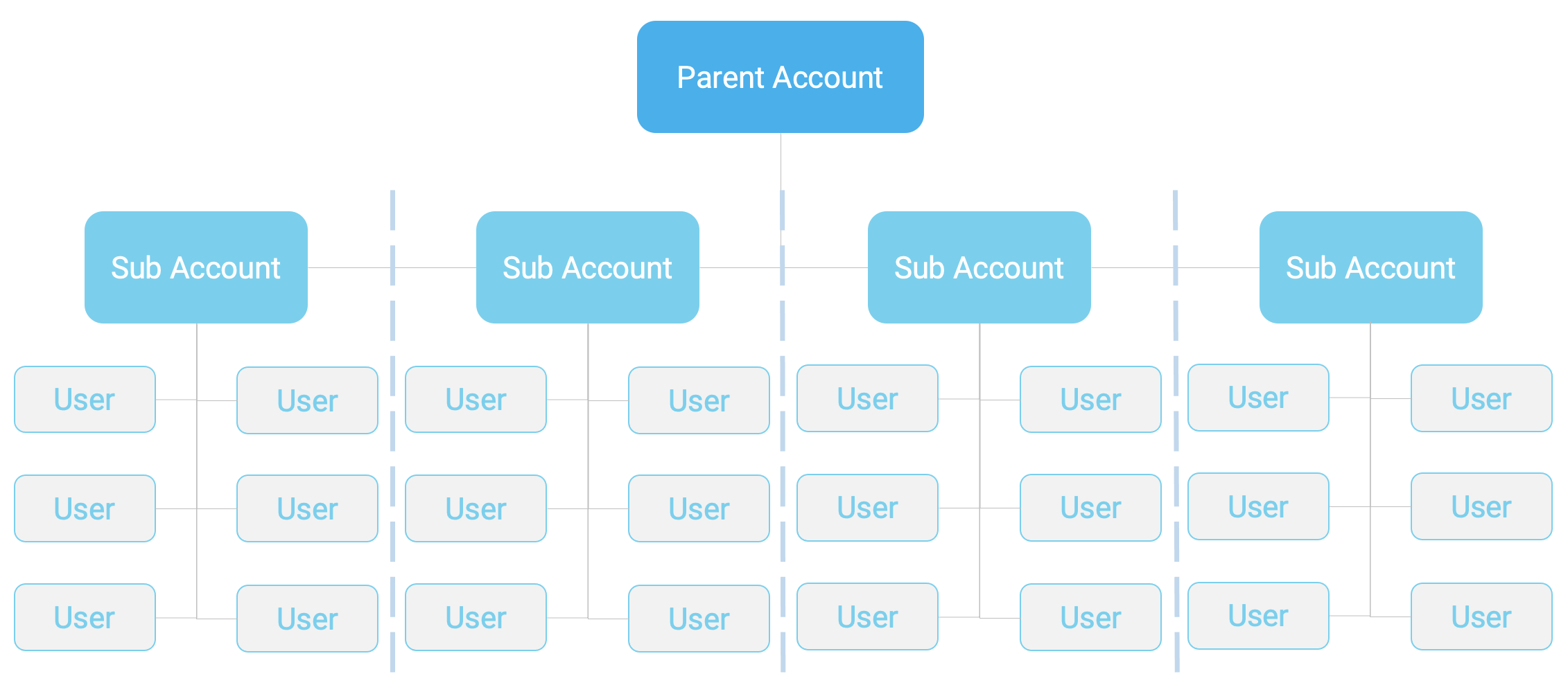Sub-Accounts
In this article:
- Explanation of Parent account, sub-accounts and users
- Details of account functionality
- Explanation of roles
- Explanation of the Parent and Sub-Account relationship
Note: To create a sub-account under your parent account, contact your 2degrees account manager
Sub-accounts are basically subsidiaries of the parent account. Each sub-account can have its own Admin and User set, without having visibility of other sub-account activity, while any administrator of the parent account will have visibility of all sub-account activity.

Note:
- You can have multiple sub-accounts
- All accounts (parent and all sub-accounts) can have multiple users assigned to them
- The Parent account has visibility of all sub-accounts
- Each sub-account can only see it's own activity
Why would you need sub-accounts?
Depending on how your organisation is structured, you can use sub-accounts to help improve visibility of campaigns and costs by creating separation between various divisions or subsidiaries. For example, if you want to use your 2degrees account to send messages relating to Marketing, Sales, Finance and Rostering, then you could create a sub-account for each purpose. This way you can have separate invoice lines for each sub-account/department as well as having separate inboxes and reporting - which may make it a lot easier to manage campaigns and engagement.
Parent Account
Every top-level customer account is referred to as a Parent Account as this is the overarching account with the ability to manage sub-accounts. An administrator accessing the parent account can conduct the following tasks:
- Invite Users to the Parent Account or any Sub-Account(s)
- Access Billing Data
- Send messages
- Inbox management
- Create & manage contacts and contact groups (and share with sub-accounts)
- Create, manage and share Templates
- Email to SMS registrations
- Manage account settings
- Create automation rules
- Create and manage API keys
- Create and manage webhooks
Sub-Account
Sub-accounts can have one or more users and have the following attributes:
- Sending messages
- Inbox management
- Create groups and contacts
- Create templates
- Email to SMS registrations
- Account settings
- Create automation rules
- Create and manage API keys
- Create and manage webhooks
All administrators and advanced users associated with a sub-account have access to the information above, so team members can access the same information without having to share with employees working outside the team. One of the major benefits of using sub-accounts is that team members needing to access the same information (e.g. monitor an inbox), don't have to share credentials. If a user leaves the organisation, they can simply be removed from the account without impacting any data or other users.
Users
A user is simply a profile with access to login to the MessageMedia web portal, be it to the parent account or a sub-account. A user can be invited to one or more accounts by an account administrator, and can have one of the following access permissions:
- Administrator (Parent Account level)
- Invite users to the parent and/or sub-accounts
- Manage billing data
- Manage Account Settings
- Manage Email to SMS registrations and settings
- Resubscribe an unsubscribed contact
- Create and manage API keys
- Create Webhooks
- Create Automation Rules
- Share groups with sub-accounts
- Share templates with sub-accounts
- Report on sub-accounts
- Administrator (Sub Account level)
- Invite users to that specific sub-account
- Manage account aettings
- Manage email to SMS registrations and settings
- Resubscribe an unsubscribed contact
- Create and manage API keys
- Create Webhooks
- Create Automation Rules
- Advanced User
- Send messages
- Report on current account usage
- View inbox
- Create groups and contacts
- View user
- Basic User
- Send messages
- View inbox (only replies to their own messages)
- View reports (own message data only)
- Cannot export reports
Users can be added or removed without impacting the account.
